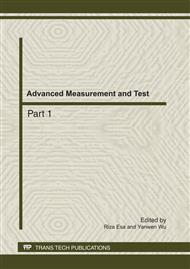p.597
p.603
p.610
p.617
p.623
p.629
p.635
p.641
p.646
Young’s Modulus Detection for Ultra-Thin Film by LSAWs Technique with Wavelet and FIR Filter De-Noising
Abstract:
Laser-generated surface acoustic waves (LSAWs) technique is a feasible method to determine the Young’s modulus of thin films. The raw surface acoustic wave (SAW) signals detected from the experimental system are often contaminated by external noises. A novel de-noising method is proposed in this paper with wavelet and FIR filter. The wavelet threshold de-noising is essential to reduce the high frequency noise components in the raw SAW signals, while FIR filter can remove the useless low frequency noises. The useful bandwidth of the detected signal ranges from 50 to 190 MHz. Young’s modulus of the detected samples can be obtained by matching the experimental dispersive curves with the theoretical calculated ones via an improved least square fitting method. The Young’s moduli of four low dielectric constant (low-k) samples detected in the measurement are 7.1, 6.8, 1.1 and 1.0 GPa, respectively.
Info:
Periodical:
Pages:
623-628
Citation:
Online since:
July 2011
Authors:
Keywords:
Price:
Сopyright:
© 2011 Trans Tech Publications Ltd. All Rights Reserved
Share:
Citation:


